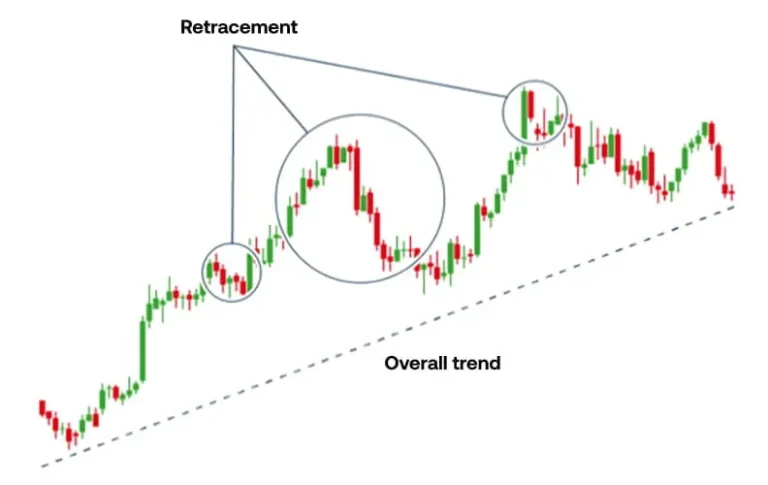Demo trading is a practice environment that simulates real market conditions, allowing traders to test strategies and learn platform functionalities without risking real money. It's typically used by beginners and experienced traders alike for skill development and strategy testing.
- Main Benefit: Risk-free environment for learning and strategy testing
- Primary Concern: Lack of emotional investment may lead to unrealistic trading behavior
- Best For: Novice traders and those testing new strategies
- Important Note: Results in demo trading may not accurately reflect real market performance
Demo Trading: Advantages and Disadvantages
This comprehensive table outlines the benefits and drawbacks of using demo trading accounts, helping traders make informed decisions about incorporating this tool into their trading journey.
| Pros | Cons |
|---|---|
| Risk-free learning environment | Lack of emotional investment |
| Opportunity to test trading strategies | Potential for developing overconfidence |
| Familiarization with trading platforms | Unrealistic trading behavior |
| Practice without financial consequences | Absence of real market pressures |
| Exploration of various financial instruments | Limited representation of actual market liquidity |
| Development of trading discipline | Possible neglect of risk management |
| Access to real-time market data | Artificial time or funding limits |
| Ability to experiment with different timeframes | Inability to experience real profit satisfaction |
| No pressure from potential losses | Lack of accountability for trading decisions |
| Opportunity to develop a trading plan | Potential for developing bad habits |
| Practice of technical analysis skills | Incomplete simulation of order execution |
| Understanding of market dynamics | False sense of trading proficiency |
| Evaluation of different trading styles | Difficulty in transitioning to live trading |
| Improvement of decision-making skills | Lack of real-world consequences for mistakes |
| Stress-free trading experience | Potential for overlooking trading costs |
| Ability to track and analyze performance | Incomplete representation of slippage |
| Practice of money management techniques | Risk of developing a cavalier attitude |
| Exploration of different market conditions | Inability to fully grasp the psychological aspects |
| Learning without time constraints | Potential for ignoring fundamental analysis |
| Opportunity to compare multiple brokers | Lack of real-world networking opportunities |
| Development of patience in trading | Possible underestimation of market volatility |
| Practice of entry and exit techniques | Risk of becoming overly reliant on indicators |
| Understanding of leverage and margin | Inability to experience real market fear |
| Opportunity to backtest strategies | Potential for developing unrealistic expectations |
| Improvement of chart reading skills | Lack of real-world news impact experience |
| Practice of position sizing techniques | Risk of neglecting the importance of capital preservation |
| Understanding of correlation between markets | Inability to fully grasp the concept of opportunity cost |
| Development of a systematic approach | Potential for overlooking the impact of taxes |
| Opportunity to learn from mistakes | Risk of developing a gambling mentality |
| Practice of risk-reward ratio calculations | Lack of experience with broker-specific issues |
Demo Trading Account Usage Statistics
This table presents key statistics and market data related to demo trading accounts, highlighting their prevalence and impact in the financial trading industry.
| Statistical Analysis & Market Data | |
|---|---|
| Percentage of new traders using demo accounts | 85% |
| Average duration of demo account usage | 2-3 months |
| Percentage of demo traders transitioning to live accounts | 30-40% |
| Average virtual capital provided in demo accounts | $50,000 - $100,000 |
| Percentage of brokers offering demo accounts | 95% |
| Average number of trades placed in demo accounts per month | 50-100 |
| Percentage of demo traders focusing on forex | 60% |
| Average win rate in demo trading | 55-65% |
| Percentage of demo traders using mobile platforms | 40% |
| Average time spent on demo trading per week | 10-15 hours |
Demo Trading Account Technical Specifications
This table outlines the technical aspects and requirements of demo trading accounts, providing insights into their functionality and accessibility.
| Technical Specifications & Requirements | |
|---|---|
| Minimum system requirements | Windows 7 or higher, macOS 10.12 or higher, 4GB RAM |
| Internet connection speed | Minimum 5 Mbps for stable performance |
| Supported devices | Desktop, laptop, tablet, smartphone |
| Data feed latency | 1-5 seconds (simulated real-time) |
| Available trading instruments | Forex, stocks, commodities, indices, cryptocurrencies |
| Maximum number of open positions | Usually unlimited, varies by broker |
| Chart types provided | Line, bar, candlestick, Heikin Ashi |
| Technical indicators available | 50+ including MACD, RSI, Bollinger Bands |
| Order types supported | Market, limit, stop, trailing stop |
| Demo account duration | Typically 30 days, some offer unlimited time |
Demo Trading Account Value Proposition
This table analyzes the cost structure and value proposition of demo trading accounts, highlighting their financial implications and potential benefits.
| Cost & Value Analysis | |
|---|---|
| Initial cost to open a demo account | $0 (Free) |
| Potential savings on learning curve | $500 - $2000 (avoided initial losses) |
| Value of risk-free trading experience | Estimated at $1000 - $5000 |
| Cost of premium demo features (if any) | $0 - $50 per month |
| Opportunity cost of demo trading time | 40-60 hours (average learning period) |
| Potential return on investment after transitioning to live | 10-20% improvement in initial trading performance |
| Cost savings on educational materials | $200 - $500 (replaced by hands-on experience) |
| Value of strategy testing without financial risk | Estimated at $2000 - $5000 |
| Potential reduction in emotional trading losses | 15-25% of initial capital preserved |
| Long-term value in developing disciplined trading habits | Estimated 30-50% increase in overall profitability |
Demo vs Live Trading Account Comparison
This table compares demo trading accounts with live trading accounts, highlighting key differences and considerations for traders transitioning between the two.
| Comparative Analysis & Alternatives | |
|---|---|
| Risk exposure | Demo: No financial risk, Live: Real money at stake |
| Emotional impact | Demo: Low emotional involvement, Live: High emotional stress |
| Execution speed | Demo: Often idealized, Live: Subject to real market conditions |
| Available capital | Demo: Usually high virtual capital, Live: Limited by personal funds |
| Learning curve | Demo: Gentle and forgiving, Live: Steep and potentially costly |
| Trading psychology | Demo: Unrealistic confidence, Live: Real fear and greed factors |
| Market impact | Demo: No impact on real markets, Live: Can affect market prices |
| Profit/Loss reality | Demo: Virtual P/L, Live: Real financial consequences |
| Strategy testing | Demo: Risk-free testing environment, Live: Real-world validation |
| Long-term viability | Demo: Limited long-term use, Live: Necessary for actual trading career |
Future of Demo Trading Accounts
This table explores the future outlook and industry trends for demo trading accounts, highlighting potential developments and their impact on the trading landscape.
| Future Outlook & Industry Trends | |
|---|---|
| Integration of AI-powered trading assistants | Expected in 70% of demo platforms by 2025 |
| Virtual Reality (VR) trading simulations | Projected adoption by 30% of major brokers by 2026 |
| Gamification elements in demo trading | Estimated 50% increase in user engagement by 2024 |
| Enhanced real-world market condition simulations | 95% accuracy in replicating live market behavior by 2025 |
| Integration with social trading networks | 60% of demo accounts to offer social features by 2024 |
| Personalized learning algorithms | Expected to reduce learning curve by 40% by 2025 |
| Blockchain-based demo trading platforms | 10% market share predicted by 2027 |
| Regulatory changes affecting demo account offerings | Stricter guidelines expected in 30% of markets by 2025 |
| Integration of demo trading in financial education curricula | Adoption by 50% of financial courses by 2026 |
| Shift towards mobile-first demo trading experiences | 70% of new demo accounts to be mobile-centric by 2025 |







